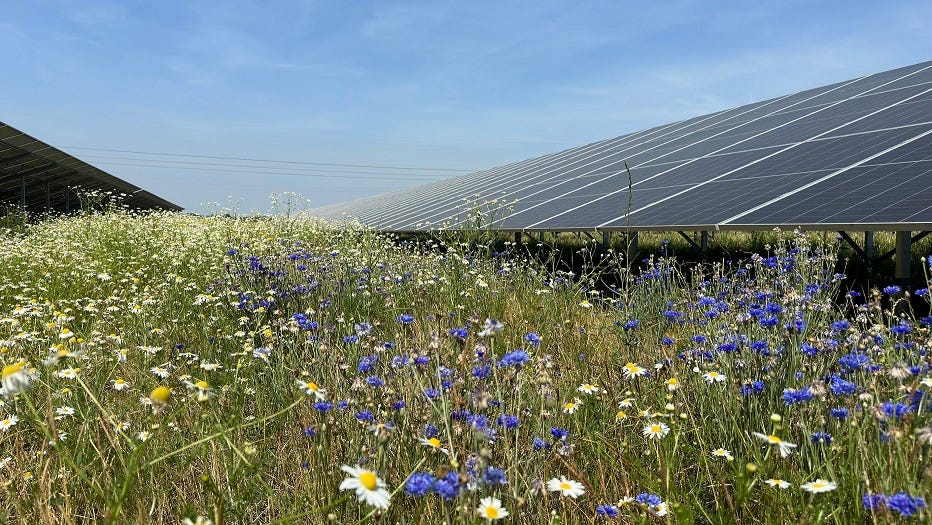Research from all over the world is finding that well-managed “solar meadows” can produce clean electrons and increase local species populations at the same time.
Tell your state leaders: solar farms can boost biodiversity!
Touch or scan the QR code below to take today’s action in the app and earn trees!
Or take action on the Internet:
Reasons For Hope
Fascinating new research findings are chronicling an emerging global trend. In many cases, solar farms can not only coexist with local species, but actively boost local biodiversity by providing a richer habitat.
For example, the 138 MW Lumen Park Szolnok was built in central Hungary by SolSystems with the explicit goal of serving as a model wildlife-friendly solar farm, with wildflower seeds sown on the site (formerly farmland) and bat, bird, and bee houses placed among the panels. PV Magazine now reports that ecological monitoring recorded 23 bird species visited the park in 2023, its first year of operation, with the common pheasant and crested lark starting to nest in the area since the solar panels were installed. Rare plants such as sea arrowgrass and saltmarsh buttercup have also appeared, buzzards and kestrels are seen more often than before, and new bird species such as bluethroats and linnets have arrived. SolSystems even published a best practices guide in English on what they learned while doing it, available as “Professional Guide for the Development of Next-Generation Solar Parks.”
And just staying in Central Europe, a recent study of 32 solar parks in Slovakia found that utility-scale solar brings substantial benefits to local bird species, with bird species diversity and numbers higher in the solar parks than in control land plots. The solar panel support structures and vegetation under the panels served as prime nesting sites, and the parks may also be helpful as winter migration stopovers by providing snow-free space under the panels.
With a little care and attention, photovoltaic installations can form “solar meadow” havens for biodiversity while generating clean electrons at the same time! There’s lots of space for more research and experimentation with this win-win solution, and it’s already starting to gain some serious momentum across America, with Minnesota becoming the first state to adopt a voluntary “pollinator-friendly solar” standard.
Spreading the word on this could help encourage communities to support vital new solar projects generating abundant clean electrons near them, as well as inspiring solar developers to check out the models for their work to attract and sustain local wildlife!







